Related Research Articles
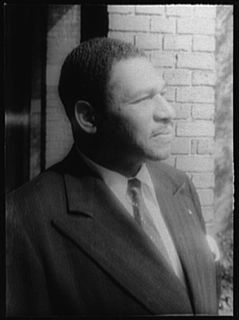
Frederick O'Neal was an American actor, theater producer and television director. He founded the American Negro Theater, the British Negro Theatre, and was the first African-American president of the Actors' Equity Association. He was also known for his work behind the scenes as a revolutionary trade unionist.

Helen Menken was an American stage actress.
The Ethiopian Art Theatre — originally called the Chicago Folk Theatre, later the Colored Folk Theatre, also referred to as The Ethiopian Art Players — was an African American theatre company based out of Chicago, Illinois. The company was an influential albeit short-lived (1922/1923–1925) group founded during the Harlem Renaissance. There are differing views over the precise year that the company was founded, 1922 or 1923. The founder was Raymond O'Neil, a white theatre director, and its principal sponsor was Mrs. Sherwood Anderson, also white; though all its performers were African American. The organization was unique and controversial during its era, primarily for being one of the few African American Theatre Companies to perform European theatrical works, but also, among other things, for producing theatrical works of African American playwrights for both African American and Non-African American audiences.
A number of theatre companies are associated with the Harlem Renaissance.
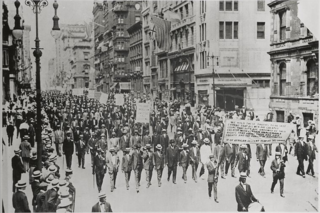
The Negro Silent Protest Parade, commonly known as the Silent Parade, was a silent march of about 10,000 African Americans along Fifth Avenue starting at 57th Street in New York City on July 28, 1917. The event was organized by the NAACP, church, and community leaders to protest violence directed towards African Americans, such as recent lynchings in Waco and Memphis. The parade was precipitated by the East St. Louis riots in May and July 1917 where at least 40 black people were killed by white mobs, in part touched off by a labor dispute where blacks were used for strike breaking.
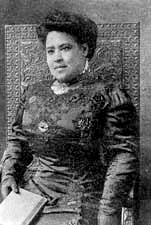
Leila Amos Pendleton was an African-American community activist and a teacher in Washington's public schools. She was the founder and president of the Alpha Charity Club of Anacostia and the Social Purity Club of Washington, DC. She was active in several other women’s race organizations, both as a secretary and vice president.

Julia Pearl Hughes, also known as Julia P. H. Coleman or Julia Coleman-Robinson, was a pharmacist, entrepreneur, social activist, and business executive. She was the first African-American woman pharmacist to own and operate her own drug store; much later, she was the first African-American woman to run for elective office in the state of New York.

Cornelius Marion Battey was an American photographer who shot photographic portraits of black Americans in a pictorialist style. His photograph of black leaders appeared on the cover of the NAACP's magazine The Crisis beginning in the 1910s. He later founded and headed up the photography department at the Tuskegee Institute.

Victoria Clay Haley, later Victoria Clay Roland, was an American suffragist, clubwoman, bank executive, and fundraiser based in St. Louis, Missouri and later in Chicago.

Astra Film Corp was an American film production company that produced silent films. Louis J. Gasnier was the company's president. George B. Seitz co-founded it. It was making films by 1916. It became Louis J. Gasnier Productions after Seitz left.

Mollie King was an American stage and screen actress.
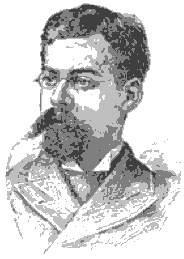
John Stephens Durham (1861–1919) was an early African-American journalist, author, attorney, civil engineer, and diplomat who served as United States Minister Resident to Haiti.
Ralph Kellard was an actor in the U.S. who appeared in theatrical productions and films. His film work included leading roles in several films such as The Shielding Shadow (1916), The Restless Sex (1920) and The Cost (film). His son Robert Kellard also became an actor.

John Cumberland was an actor on stage and screen. He had starring roles and featured in comedies.
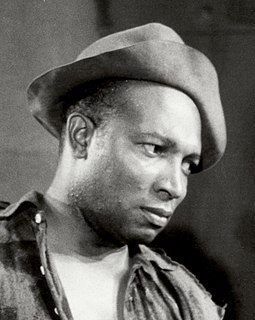
J. Augustus Smith, also known as Gus Smith, was an American actor, playwright, and screenwriter. In 1936 he was one of three theatre artists who succeeded John Houseman in leading the Negro Theatre Unit of the Federal Theatre Project in New York City.
Central Alabama Institute was a school for African Americans in Alabama. It was established as Rust Normal Institute, a school to train African American teachers in Alabama in 1872. It opened in Huntsville, Alabama in 1878. It became Central Alabama Academy in 1890. In 1904 it moved to Mason City on the outskirts of Birmingham, Alabama. In 1922 its main building and other structures were struck by fire. It was not rebuilt or reopened. The school was affiliated with the Methodist Church.
Frederick Douglass Memorial Park is a historic cemetery for African Americans in the Oakwood neighborhood of Staten Island, New York. It is named for abolitionist, orator, statesman, and author Frederick Douglass (1818–1895), although he is not buried there. It has burial sites for numerous prominent African Americans, including a pioneering journalist, athletes, musicians, performers, political leaders, and business people.
Floyd Joseph Calvin was an American reporter, columnist, radio host, and news service founder. He worked at The Messenger magazine in New York City and then as a New York correspondent for the Pittsburgh Courier newspaper which, along with the Chicago Defender, were the largest newspapers for African Americans in the country. He founded Calvin News Service which was syndicated by African American weekly newspapers.

Brenda Ray Moryck was an American writer associated with the Harlem Renaissance.
The Colored American Winning His Suit is a 1916 race film, the first production of the Frederick Douglass Film Company. It was written and produced by the Reverend W. S. Smith, pastor of the Monumental Baptist Church of Jersey City, New Jersey, and also a member of the production company. The New York Age hailed it as "the first five-reel Film Drama written, directed, acted and produced by Negroes." Its purpose was to counter anti-African-American films and improve race relations.
References
- ↑ "Economics". The Crisis . Vol. 11 no. 3. p. 115.
- 1 2 "Frederick Douglass Film Company". normanstudios.org.
- 1 2 3 4 Lupack, Barbara Tepa (2002). Literary Adaptations in Black American Cinema: From Micheaux to Toni Morrison. University Rochester Press. p. 80. ISBN 9781580461030 – via Google Books.
- 1 2 White, Lucien H. (July 20, 1916). "The Colored American. (Winning His Suit.)". The New York Age .
- ↑ "Minister Writes Complete Drama". Indianapolis Recorder . September 2, 1916.
- ↑ "Majestic Theatre". New Jersey City University.
- ↑ Richards, Larry (May 27, 2005). African American Films Through 1959: A Comprehensive, Illustrated Filmography. McFarland. ISBN 9780786422746 – via Google Books.
- ↑ ""The Scapegoat"". The New York Age. May 17, 1917.
- ↑ Bois, William Edward Burghardt Du (January 27, 1917). "The Crisis". Crisis Publishing Company – via Google Books.